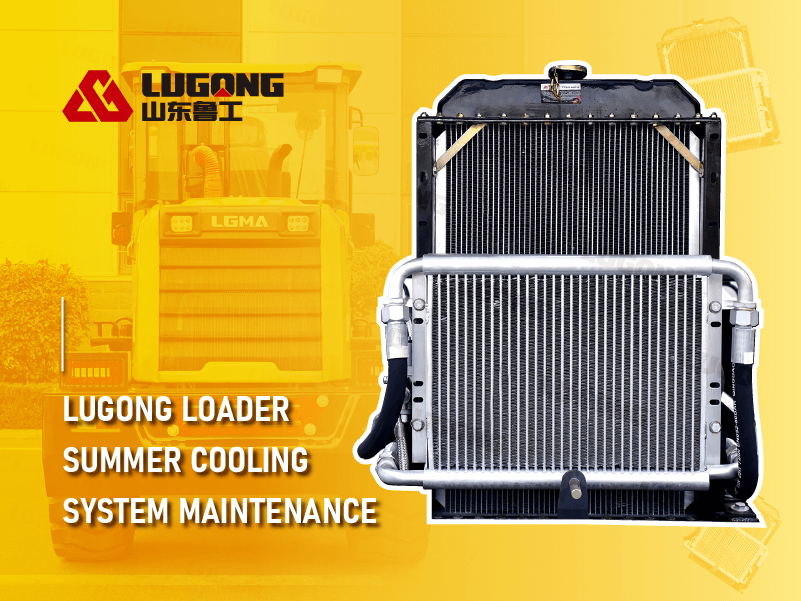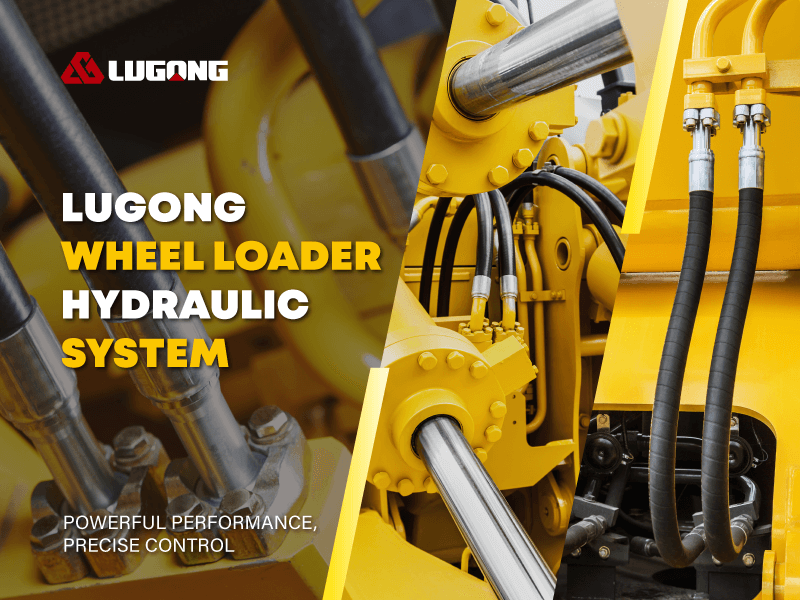LuGong Wheel Loader Summer Cooling System Maintenance and Troubleshooting Guide
On hot summer days, when your wheel loader sweats on the construction site, the persistent high temperature is on its engine and cooling system, constituting a severe test. Problems such as high water temperature (commonly known as “boiling”), hydraulic powerlessness, transmission oil temperature alarm, etc. will not only interrupt the operation, but also lead to expensive repairs.
LuGong Machinery’s technical experts have compiled a detailed summer cooling system maintenance guide for you, just four simple steps, can help your wheel loader smoothly through the hot season, to maintain a long-lasting working condition!

Four steps on wheel loader summer cooling system maintenance and troubleshooting
Clean the radiator surface dust and other debris
The radiator is the core component of heat exchange. Dust, willows, insects and other debris flying on the construction site will cause blockage to the cooling system of the wheel loader, resulting in a decline in cooling efficiency.
Inspection point: Check whether the surface of the radiator (water tank, hydraulic oil radiator, air conditioner condenser) is covered with dirt.
Maintenance method:
Always operate the engine after it has completely cooled down to avoid scalding.
Using a high-pressure air gun, blow from the inside of the radiator (fan side) outward to completely blow out the debris.
If oil contamination is serious, use a low pressure water gun to rinse after air blowing. Remember: The water pressure should not be too high to avoid washing down and damaging the fragile cooling fins.
Ensure that the gap between the radiator group has also been cleaned up.
Check the coolant
Coolant is the “blood” of the cooling system, and its core role in summer is to prevent boiling. Expired or poor quality coolant boiling point is reduced, easy to boil, and may produce scale, clogging the pipeline.
Check points: coolant level, color and cleanliness.
Maintenance Methods:
When the vehicle is cold, observe whether the level of the sub-tank is between the highest and lowest two marks.
Observe whether the coolant is cloudy, sediment or oil. If any abnormality is found, replace all of it immediately.
Follow the maintenance manual recommendations (usually 2 years or 2000 hours) for replacement. Do not mix different brands of coolant.
Check the fan belt
The fan is the key to forced ventilation, while the fan belt is the link that transmits power. Belt slack will slip, resulting in insufficient fan speed, cooling effect greatly reduced.
Check points: fan belt tension and aging.
Maintenance method:
In the engine off state, with the thumb in the middle of the belt pressing hard, sinking amount between 10-15 mm is appropriate.
Carefully observe the belt surface with or without cracks, damage or excessive wear, such as the need for immediate replacement.
Check the hydraulic oil radiator
wheel loader high-intensity operation, the hydraulic system will also produce huge heat. High hydraulic oil temperature will directly lead to weak operation, slow response, and accelerate the aging of seals.
Check points: the cleanliness of the hydraulic oil radiator and the hydraulic oil level.
Maintenance method:
When cleaning the tank radiator, be sure to clean the hydraulic oil radiator installed side by side as well.
Make sure the hydraulic oil level is normal and the oil is clean. Replace the hydraulic oil in accordance with the summer working conditions on time.
LuGong Reminds
summer high temperature operation, in addition to cooling the equipment, the operator’s safety is also critical. Please always pay attention to the dashboard water temperature, oil temperature readings, once the temperature is found to be abnormal, the wheel loader should be immediately parked in the shade idling to cool down, do not immediately turn off the engine, in order to prevent the engine internal sudden high temperature caused by damage. For more information about wheel loader maintenance, welcome to consult LuGong machinery manufacturers.


